
Dragon Flame Examples
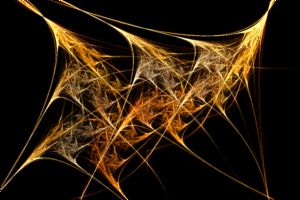
Dragon Flame 01 |
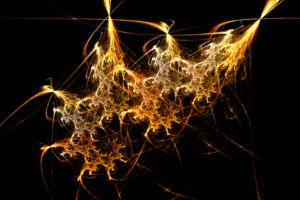
Dragon Flame 02 |
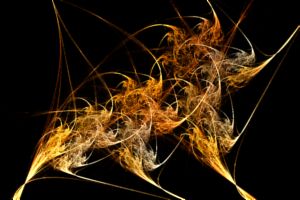
Dragon Flame 03 |
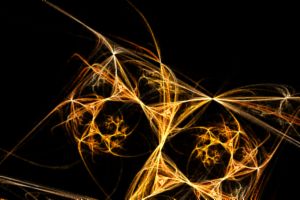
Dragon Flame 04 |
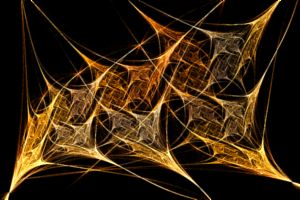
Dragon Flame 05 |
The Dragon Flame examples each define a Dragon fractal altered by a Flame Transformation.
Several Dragon fractals are described on the Levy Dragon and Heighway's Dragon pages on Larry Riddle's Classic Iterated Function Systems site. A Flame transformation is applied to the Dragon fractal attractors to vary the design.
Change the Dragon Properties
Select the equation's properties page:
General
Orbital / IFS / Strange
Attractor
Orbital Equation: Dragons
Properties
Change the Dragon property to try out the predefined dragons, or set the Angle 1 and Angle 2 properties directly.
Change the Flame Transformation Properties
Select 1 of the transformation's properties pages:
General
Orbital / IFS / Strange
Attractor
Orbital Equation: Dragons
Transformation Array
Flame Transformation
Base Affine Transform
Post Affine Transform
Flame Variations
Flame Variation Arguments
Change the properties found on these pages to define the Flame transformation..
The Flame transformation's properties are found on 4 pages. Base Affine Transform and Post Affine Transform define affine transformations, and Flame Variations and Flame Variation Arguments define a set of non-linear transformations called flame variations.
The affine transformations Base Affine Transform and Post Affine Transform, are applied before and after the set of non-linear flame variations, respectively. Each affine transformation is composed of a series of simple transformations, applied one after the other, as defined on the respective properties page.
The remaining 2 pages define the flame variations. A flame variation is a non-linear transformation (i.e., complex function). The Flame Variations page determines the weight assigned to each variation. Any variation with a weight of 0 is not applied. The Flame Variation Arguments page holds the arguments, if any, for the variations with non-0 weights. After you set the weights for the variations you want to use, select the Flame Variation Arguments page to set the corresponding arguments, if any.
Change the Transformation
You can apply a transformation to the fractal.
Execute the Home command on the View menu of the Fractal Window to reset the fractal to the default position/magnification before you adjust the transformation. Then change the transformation and Zoom In to interesting areas of the transformed image.
To apply a transformation to the fractal, select the Identity transformation's page:
General
Orbital / IFS / Strange
Attractor
Transformation 1
Identity
Set the Based On property to one of the available transformations, select the transformation's properties page (found under the transformation in the page hierarchy), and play with the properties found there.